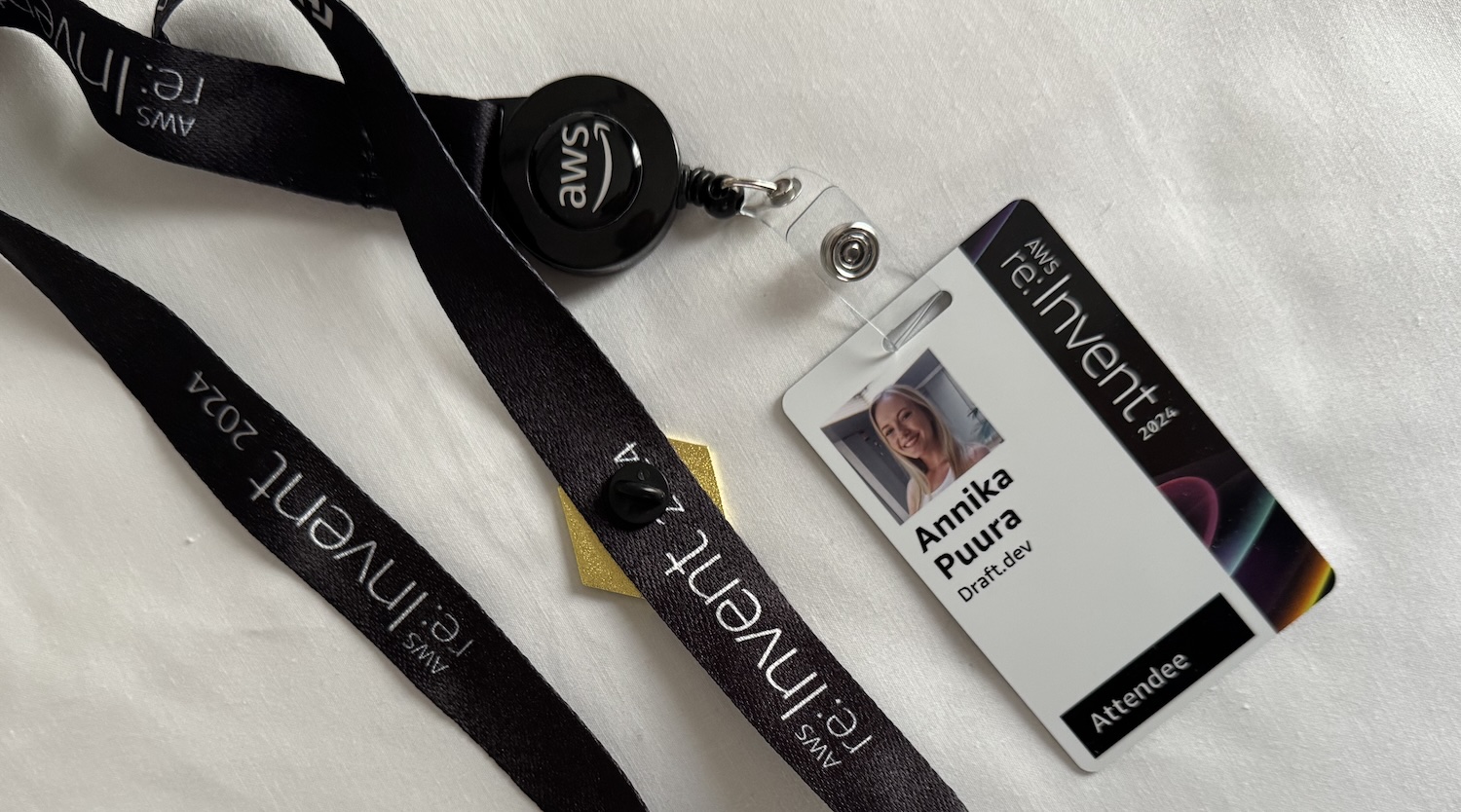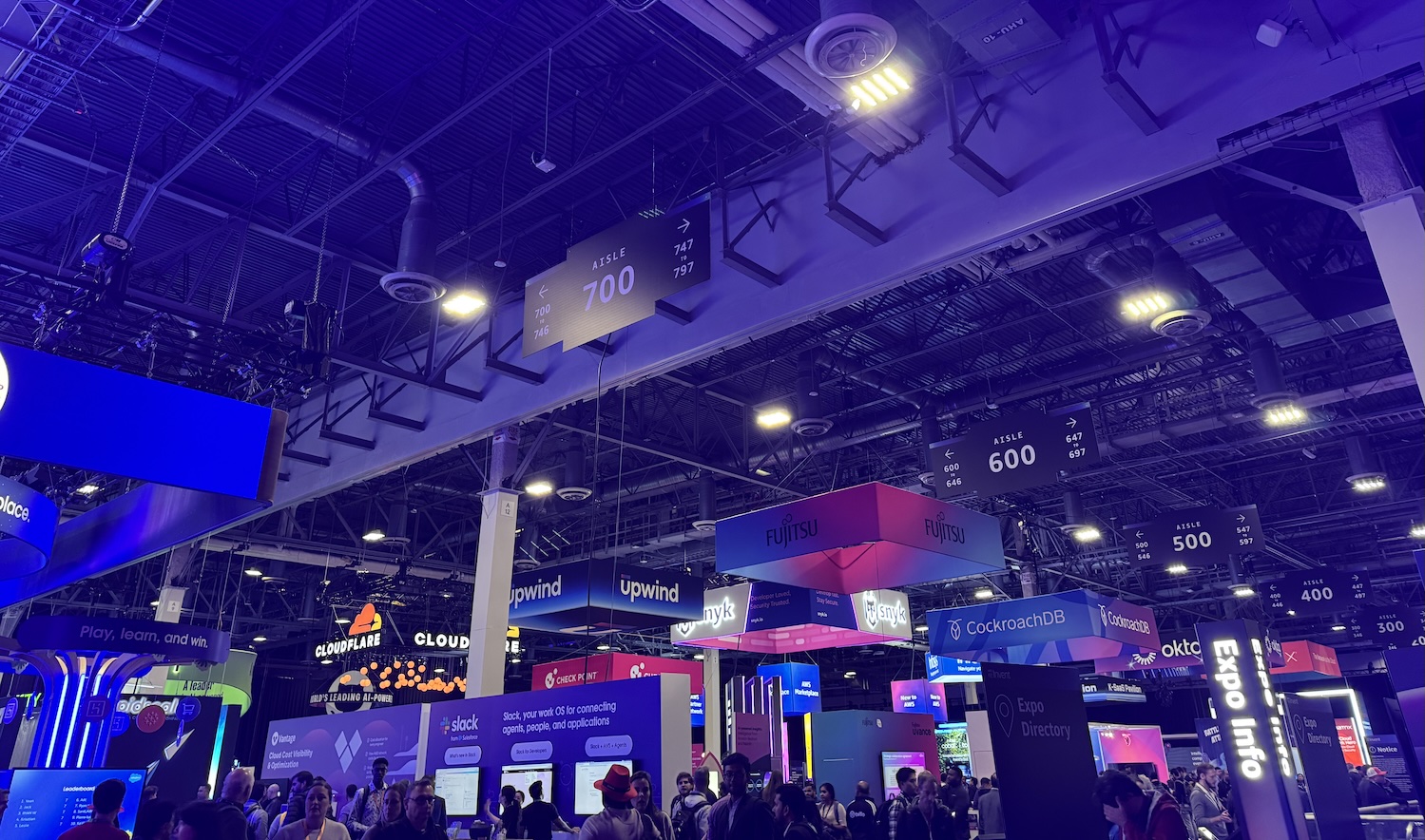Article Information
Category: AWS
Updated: October 15, 2025
Author: Annika Puura
Reading Time: 5 min

How to Make the Most of Your First AWS re:Invent 2025
Updated: October 15, 2025
Heading to your first AWS re:Invent? Get ready for a week that's a mix of incredible opportunity and logistical chaos. With tens of thousands of attendees and thousands of sessions spread across multiple Las Vegas hotels, it's easy to get overwhelmed. If you go without a plan, you'll likely leave with little more than a free t-shirt and a sense of exhaustion.
I attended my first re:invent a year ago in 2024 and learned that the key to getting value from the conference is to treat it like an operational project. Regardless of who is paying for the tickets, it's a strategic investment of time and money. A little structure beforehand allows for more valuable spontaneity on-site and will help you get a real return. Here's my approach, broken down into three phases.

Phase 1: The Pre-Conference Ops Plan
The most important work happens weeks or even months before you fly. This phase is about defining your goal, actually doing the pre-event work, and then preparing your logistics.
1. Define Your "Why"
First, you need to define your primary role at the conference. Your goals will vary dramatically depending on why you're there.
- The Learner: You're a developer, cloud specialist, devops engineer or similar. Your company sent you to absorb knowledge. If that's your case, your goal isn't just to attend sessions, but to solve a problem. Ask yourself: "What specific challenge is our team facing that I can find a solution for here?" Identify 2-3 core themes (e.g., AI/ML services, FinOps, security) and prioritize the sessions, workshops, and hands-on labs that align with them. Your goal is to return with actionable insights, not just a head full of facts.
- The Networker/Consultant: You're there to build connections, meet with partners or clients. Your mission is to create a target list of 10-20 people (speakers, experts, potential clients) you want to meet. In your case, the sessions are secondary; the hallways, meeting rooms or the expo will probably be your main event. Research these individuals beforehand and have a specific, value-driven reason to connect with them. A simple Google sheet will go a long way to track who you meet.
- The Vendor/Salesperson: If you're working a booth or representing a product, your mission is to make your booth conversations more meaningful than just a swag drop. Have a good qualifying question ready to identify high-potential leads, but more importantly, try to listen and understand their pain points. The more you understand about your product and how it can help the potential lead, the better results you can get.
2. The Logistics Checklist
Fortunately, I did my research before hopping on a plane and can confirm—all these tips are 100% valid.
- Truly Comfortable Shoes: You will walk 20,000-30,000 steps a day. This is the most repeated advice for a reason, and it is non-negotiable. Fortunately, the "business comfort" look is very in right now, so a great pair of stylish sneakers with tailored pants is a perfect uniform for the week.
- Dress in Layers: It can be surprisingly cold at night and in the heavily air-conditioned conference halls, but hot when you're walking outside during the day. A packable jacket or a smart blazer is a good option to bring.
- The Vegas Essentials: The desert air is incredibly dry. Pack lip balm, a good hand cream, and a reusable water bottle. Many veterans even recommend buying a small, cheap humidifier for your hotel room. While I thought it's an overkill, it may make a difference for your sleep.
- A Battery Pack: This is the only item I brought as per the recommendations, but didn't end up needing, so I either have a great battery or the phones have got better over the years. That said, your phone will be your map, your schedule, and your networking tool. Our team also used it to record a video series.
- Leave Room for the Hoodie: You'll get a free re:Invent hoodie and a cool water bottle, plus any other swag you decide to collect. Make sure you leave enough space in your luggage to bring it all home. I still vividly remember the stress of trying to cram everything into my suitcase at 2 AM after the final concert to catch a 5 AM flight. Not fun!
Phase 2: On-Site Execution
Once you land, your plan is your guide, not your rulebook. The goal is to be structured enough to be effective, but flexible enough to use unexpected opportunities.

1. Session Strategy
The session catalog is a trap. It's designed to make you feel like you need to be everywhere at once. You don't.
- Prioritize Workshops & Labs: Breakout sessions are almost always recorded and available on YouTube later. Hands-on workshops, builder sessions, and chalk talks are not. Prioritize these interactive sessions where you'll actually build something or engage in a real discussion.
- Don't Overbook: A packed schedule is a failed schedule. The travel time between venues can be 30-45 minutes. I recommend a maximum of 3-4 sessions per day, with open slots in between. This gives you time for the unplanned conversations that are often the most valuable part of the conference.
2. Networking for Pragmatists
If you're not a natural extrovert, the idea of "networking" can be dreadful. Here's how to make it less awkward and more effective.
- Join the Unofficial Slack Channel: This is a fantastic resource. You can meet people before you go, find out about parties, and ask for advice from veterans.
- Have a Good Opening Question: Instead of generic small talk, have a targeted question ready. "What's the most interesting thing you've learned so far?" or "Are you working on any interesting problems with [Service X]?" gets to the point. If you see someone from a company you admire, a simple "I'm a big fan of how your team handles Y, I'd love to hear your thoughts on it" can be a great opener.
- Talk to Presenters After Their Session: They are there to share their knowledge and are usually happy to answer specific questions one-on-one. It's a low-pressure way to meet an expert.
- Use the Expo Hall Strategically: Don't just wander and collect swag. Go to the booths of companies whose tools you genuinely use or are interested in. Talk to the engineers and product managers, not just the sales reps. They can often provide in-depth insights you won't get anywhere else.
Phase 3: Post-Conference Follow-Up
The conference doesn't end when you fly home. The real value is captured in the week after. If you don't process and act on what you've learned, the investment is wasted.
- Process Your Notes Within 48 Hours: Block out 2-3 hours the day after you get back to review, organize, and identify the main insights from your notes. If you have a long-haul flight home like I did, that might be your "me" time to jot down thoughts and feelings about the event, and organize notes as well as your post-event action plan.
- Send Meaningful Follow-Ups: When you connect on LinkedIn, be specific. Instead of "Great to meet you," try "Great discussing your work on [Project X] at the expo. As promised, here's that article I mentioned on the topic." It shows you were listening and provides value. This is why it's important to take good notes on everyone you meet.
- Share a Team Debrief: If you're someone who needs to demonstrate your learnings, prepare a short presentation for your team that covers:
- Key Learnings: The top 3-5 insights that are relevant to your team's goals.
- Action Items: Specific, concrete next steps you or the team can take.
- New Connections: Key people you met and why they might be valuable contacts for the company. This solidifies your own learning and distributes the value of your attendance across the entire organization.

Conclusion
Attending a conference like re:Invent is a significant investment of time and money. It's not only the few days you'll spend in Vegas, but all the prep and post-conference tasks you'll need to handle. By treating it as a project with clear goals and an operational plan, you can make sure you leave not just inspired, but with real insights and connections that actually matter. The goal isn't just to "survive" the week; it's to make it one of the most productive and valuable weeks of your year.
